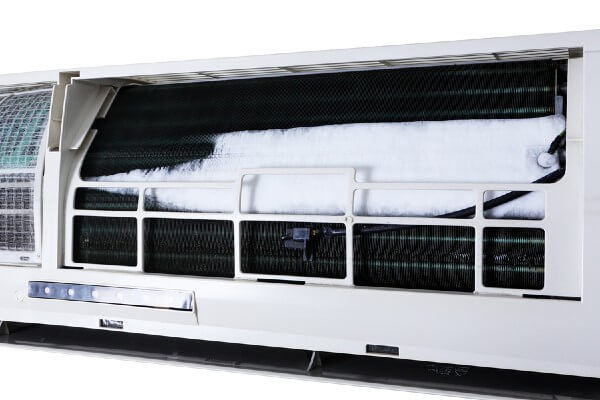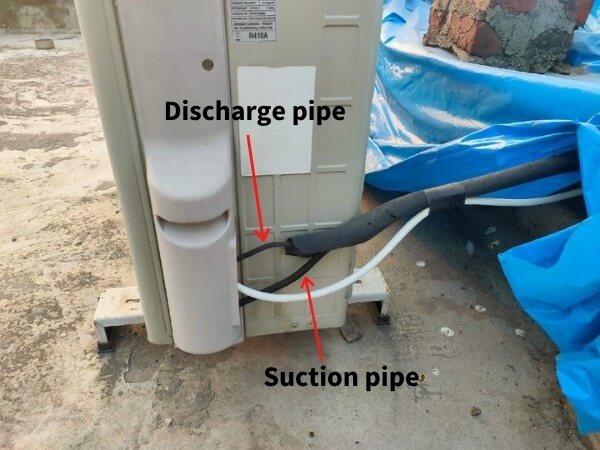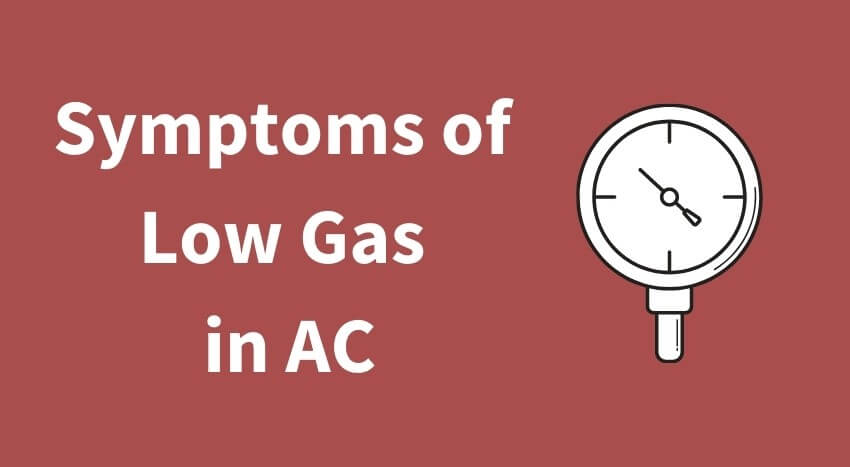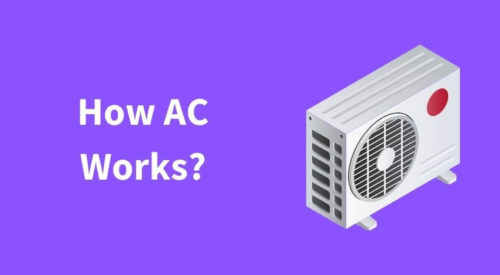An AC technician can easily identify low gas levels using the pressure gauge and wattmeter for checking gas pressure and input current respectively.
But if you want to check the low gas levels of your air conditioner without the use of any sophisticated tool and the help of a technician then this post is for you.
I have listed a few signs that indicate low gas levels
- Low Cooling
- Ice formation on evaporator coil
- Ice formation on discharge pipe
- Low input current value
- Hissing or Bubbling sound
- Desired Room Temperature is never attained
- Increased electricity bills
These symptoms apply to both window and split AC.
However to be 100% sure you must contact a technician for checking the low refrigerant level using a pressure gauge.
How long can the Gas last in Air Conditioner
The refrigerant present inside an air conditioner is not used like gas in a car.
It only gets circulated through the indoor and outdoor coils. It cannot get empty on its own.
There must be some leakage present in the coil causing the gas level to get low.
So if there is no leakage then the gas will last for decades.
Symptoms of low Refrigerant Gas
1. Low Cooling
If your air conditioner is facing low gas levels then it will impact the cooling power.
The cooling efficiency will reduce and the indoor unit blower may throw warm air instead of cold.
If this is the case with your AC then it may have gas leakage.
However, that is not always the case.
There can be other reasons for low cooling like clogged filters, dirty indoor or outdoor unit, clogged capillary, etc
2. Ice formation on evaporator coil

Evaporator coil is present in the indoor unit and the condenser coil is present in the outdoor unit.
If the gas is low then ice sheets will start to form on the evaporator coils.
This can also result in water dripping from the indoor unit.
You will need to remove the casing from the indoor unit to check the formation of ice on the coil.
If the gas level has completely dropped to zero then the evaporator coils will not get cold by any degree.
3. Ice formation on discharge pipe

Ice can also appear on the discharge pipe near the outdoor unit.
There are two pipes connected to the outdoor unit which connects it to the indoor unit.
One is called the “discharge pipe” and the other is called “suction pipe”.
When the compressor of the AC starts and if the gas level is optimum then after some time discharge pipe and suction pipe both become cold and none develops ice.
But in the case of low gas, the discharge pipe develops ice and the suction pipe never gets cold.
In the case of window AC, you can’t observe these pipes as these are inside the AC.
4. Low input current value
Check the outdoor unit of your AC, there you will find a label that will give you the current value.
For example, check the below label of my Hitachi split AC.

The value reads as 5.72 A.
If the refrigerant level is low inside, then the AC will consume less ampere current.
So for my AC if the currect value is too low than 5.72A like let’s say 4A then it clearly indicates the gas is low. Note that slight variation is not a big deal like 5-6 A.
Often a technician uses a watt meter to check the current value but you can also use your voltage stabilizer to check the input current.
Make sure that the compressor is running when you take the readings.
5. Hissing or Bubbling sound
At any position of your AC if you hear hissing or bubbling sound. This indicates that gas is leaking due to some hole in the coil.
You will need to get the leakage point fixed first before you can refill the gas.
Call the AC service company for the same.
6. Desired Room Temperature is never attained
If earlier your AC cooled your room to a set temperature within a period of time and now it is failing to achieve the desired room temperature.
This indicates low gas.
7. Increased electricity bills
Due to low gas, AC never achieves the desired room temperature and so the compressor keeps on running without getting OFF.
This puts more pressure on the compressor and it consumes more power leading to increased electricity bills.
Final Thoughts
All the above signs and symptoms only indicate some problem in your AC.
To be 100% sure you must get your AC checked for gas pressure levels using a pressure gauge and amperage current using a wattmeter.
All this can be done by an expert technician.
Dear reader with time as an aircon degrades its coil gets multiple leaks which is difficult to repair then one should get an new and best split AC for there home.
Further Reading




